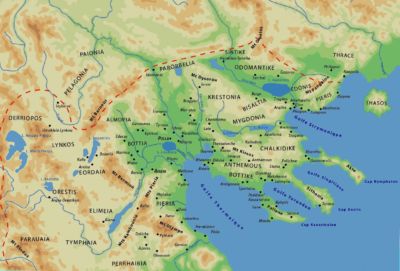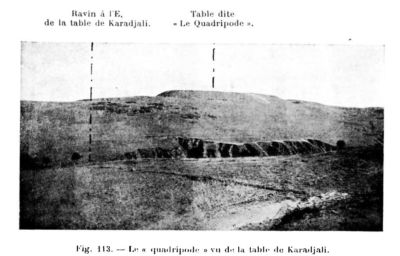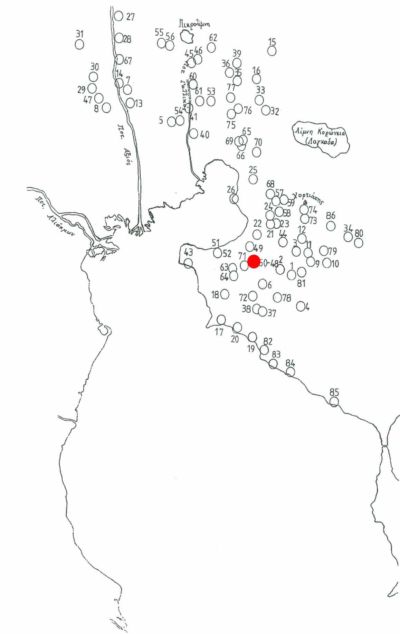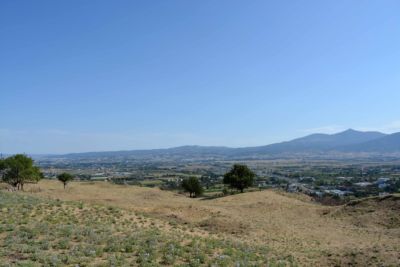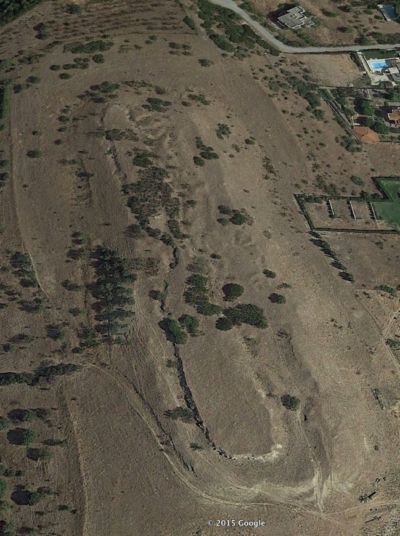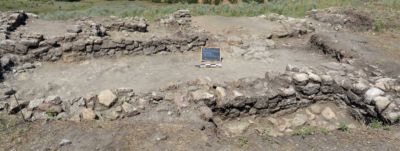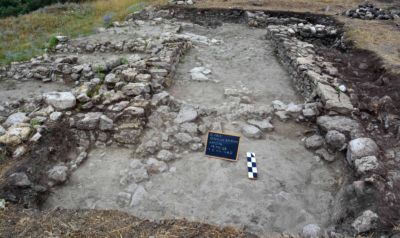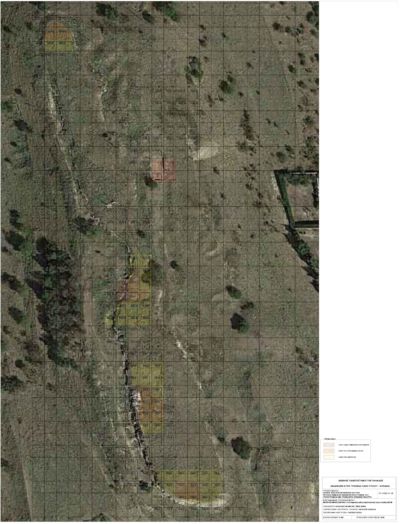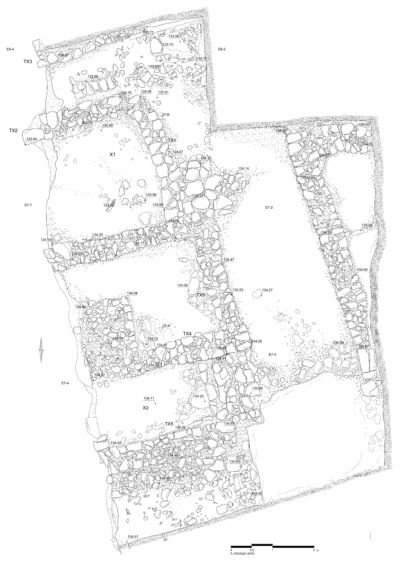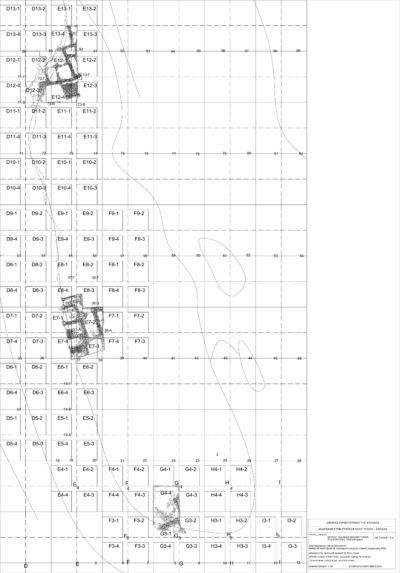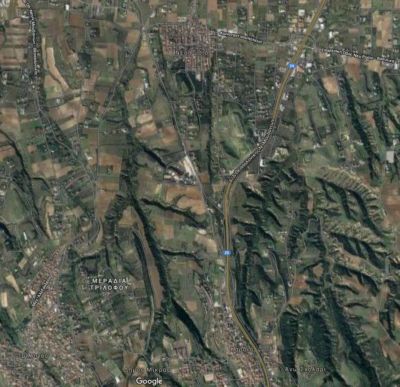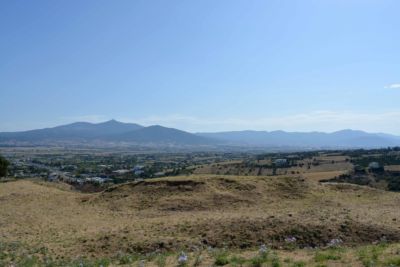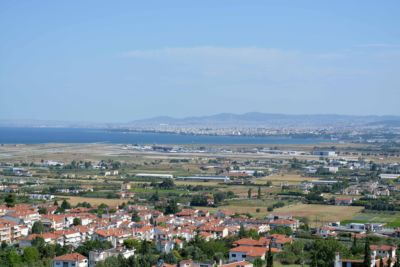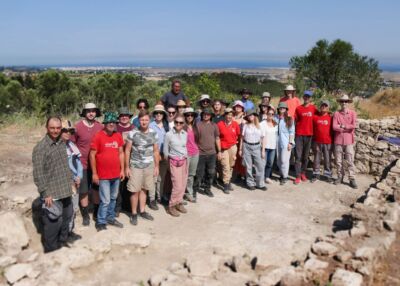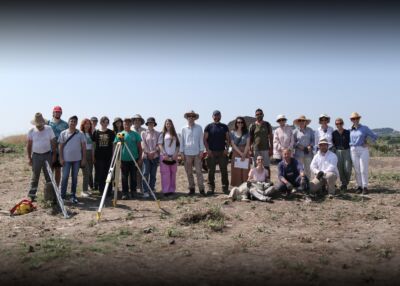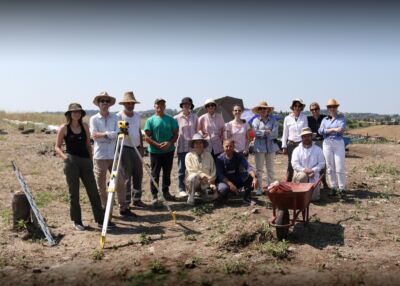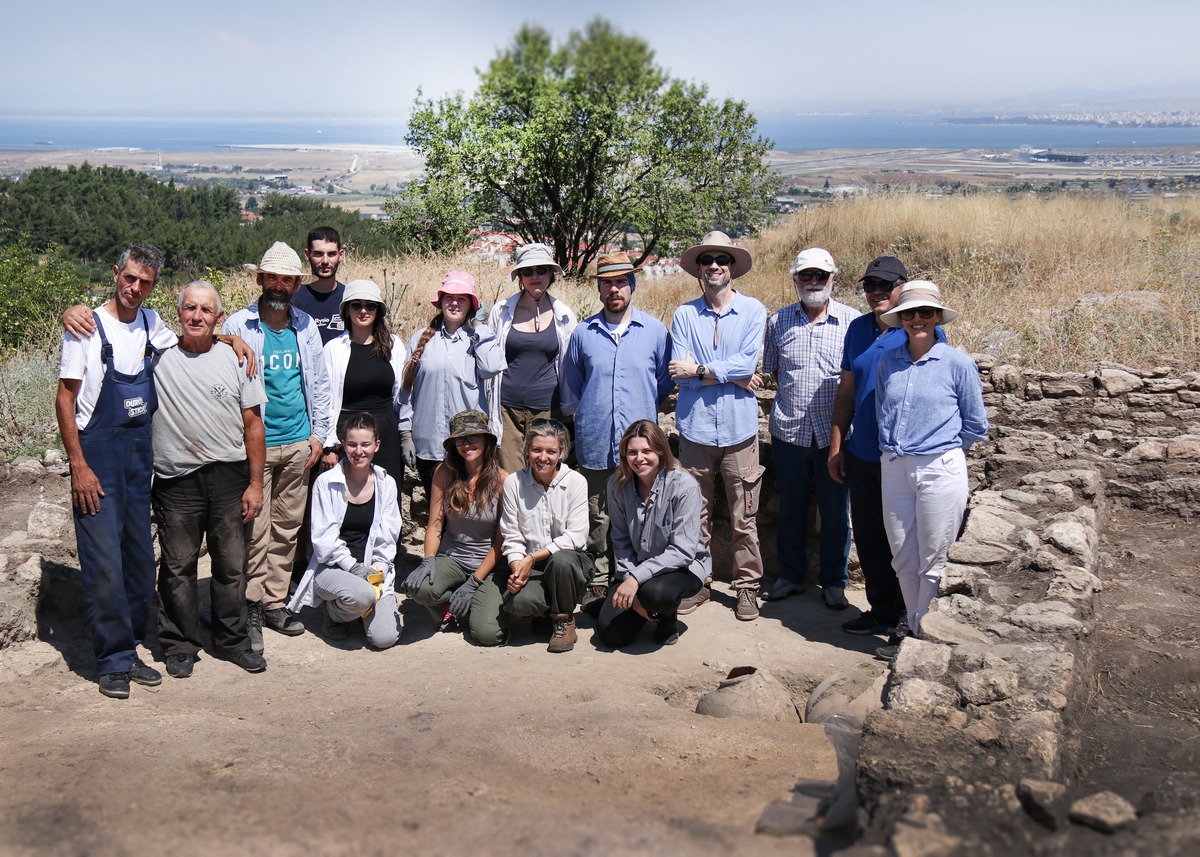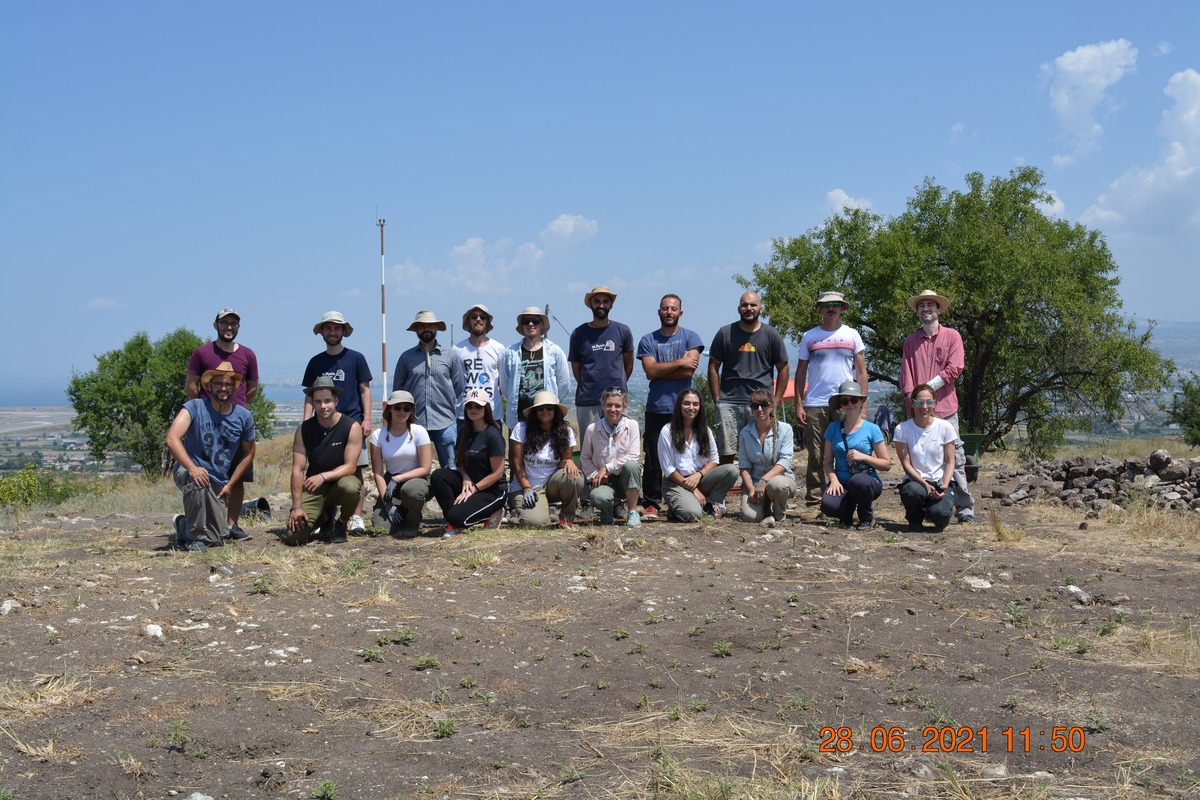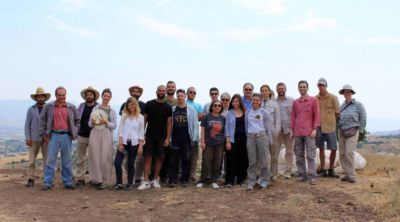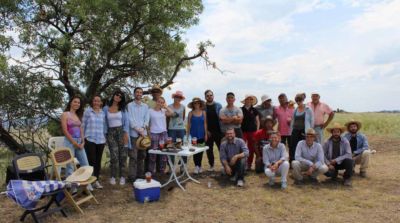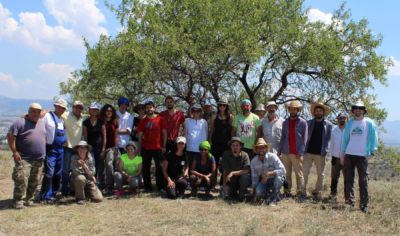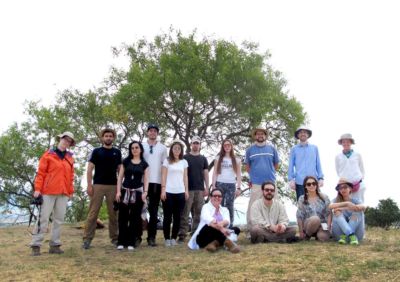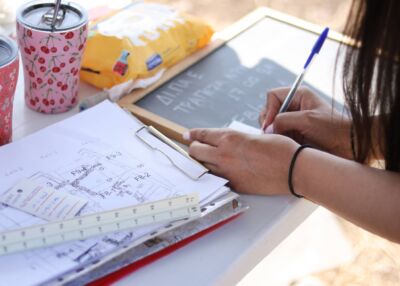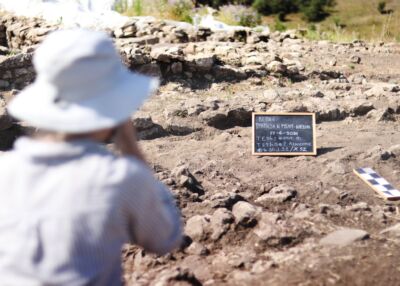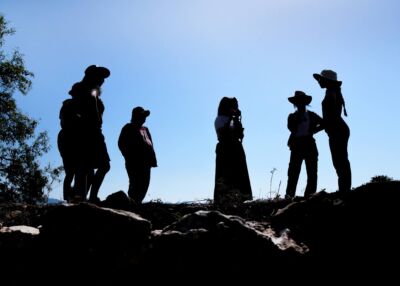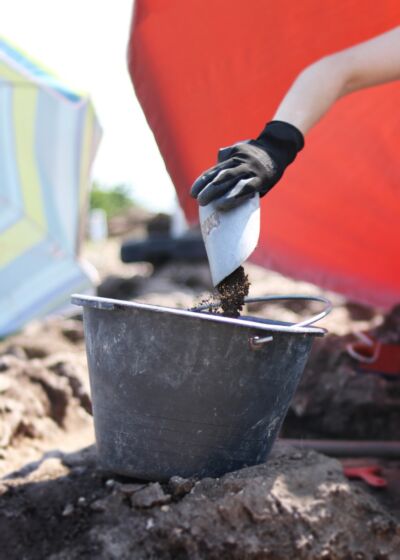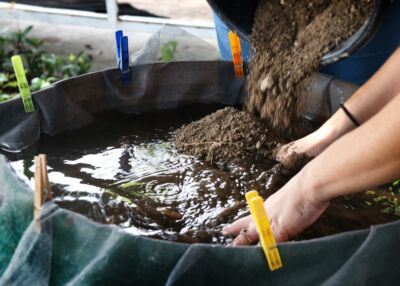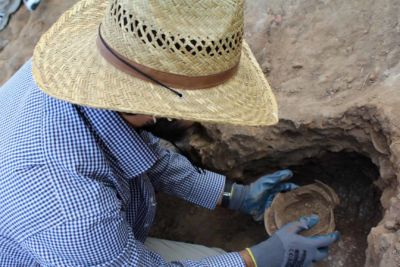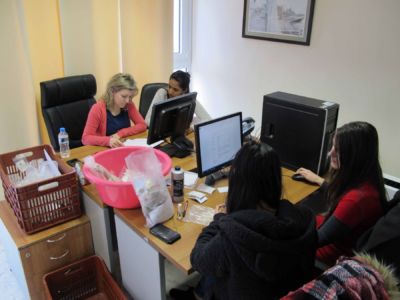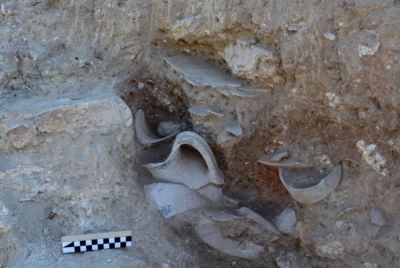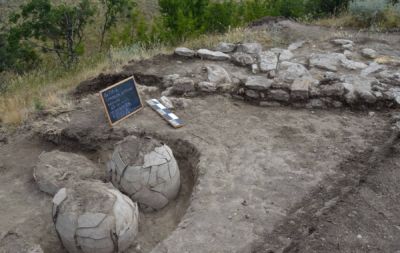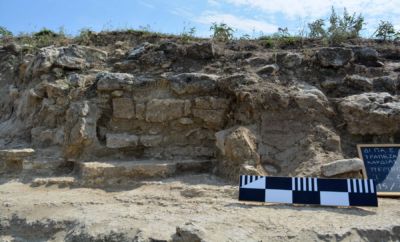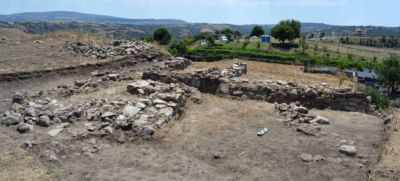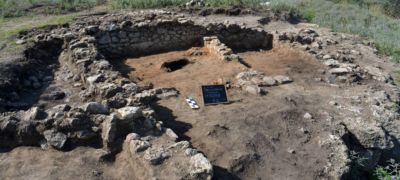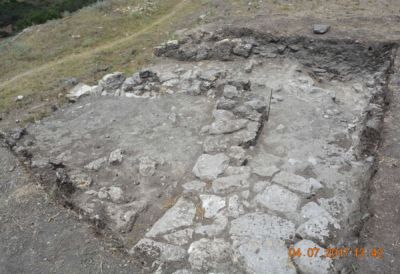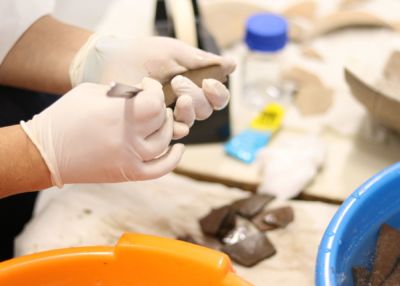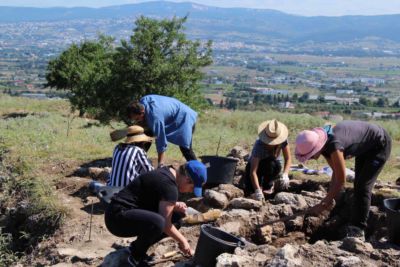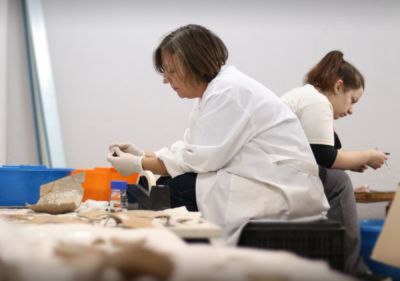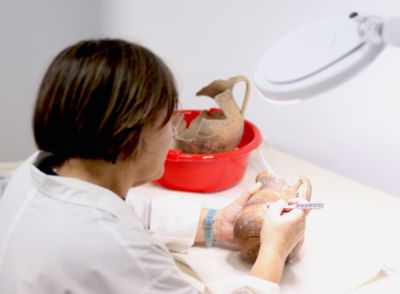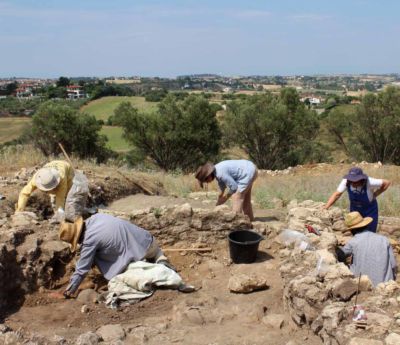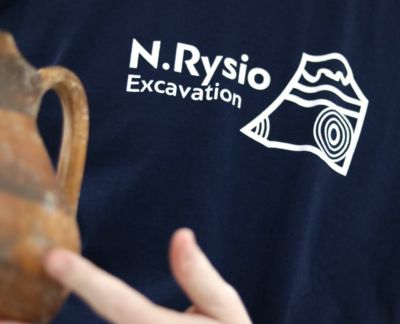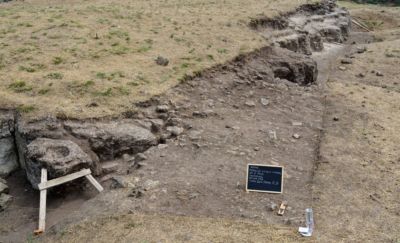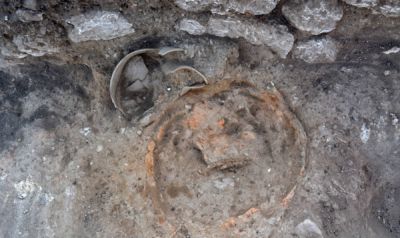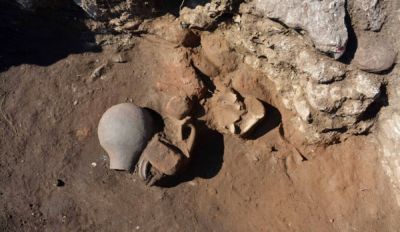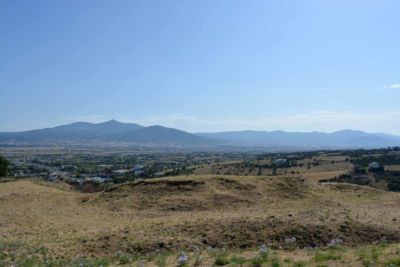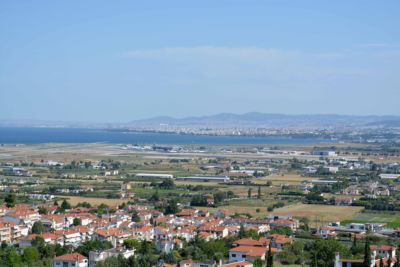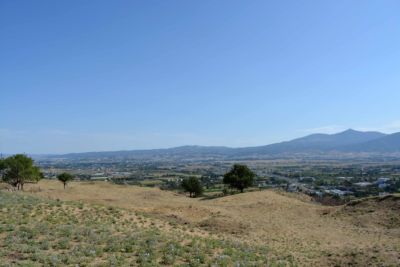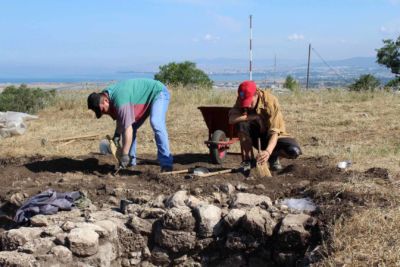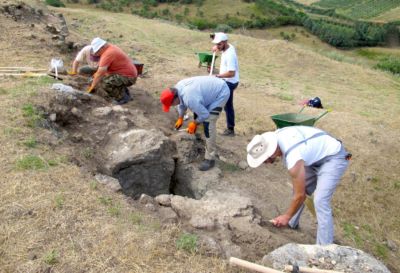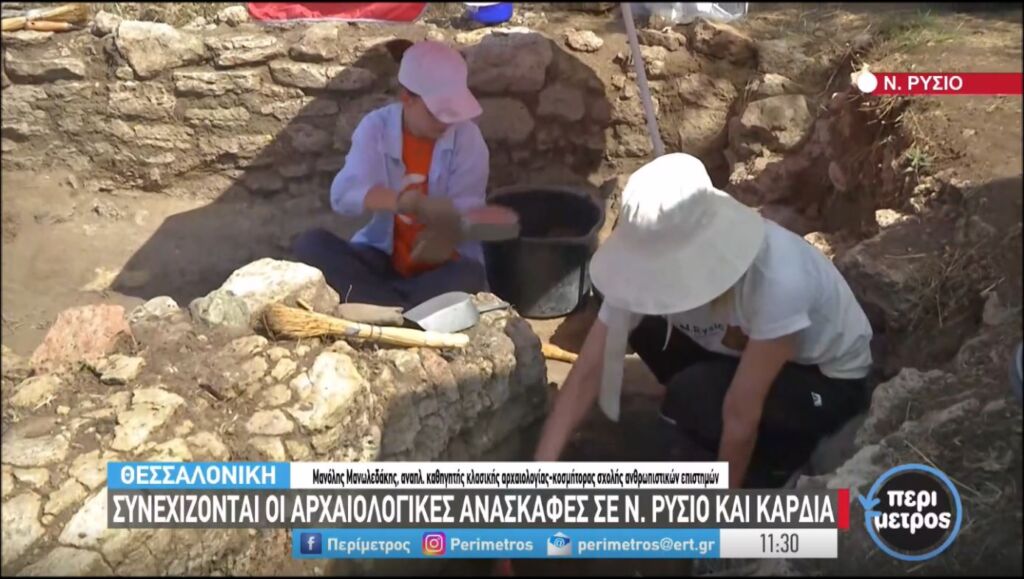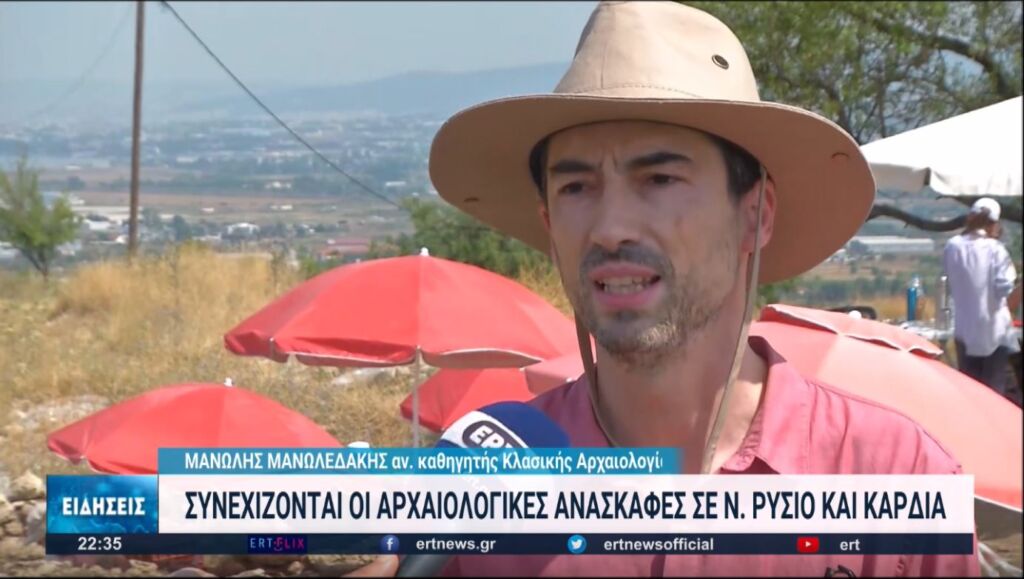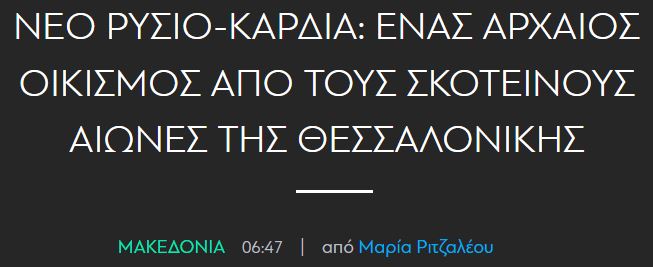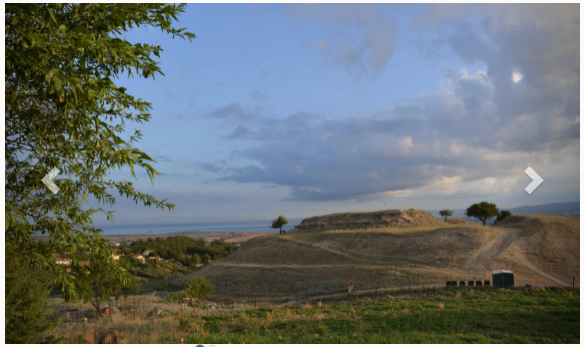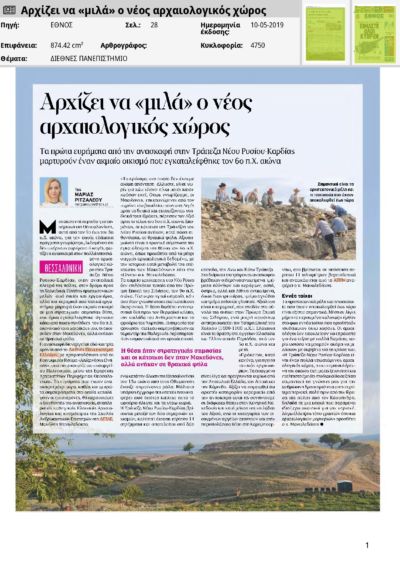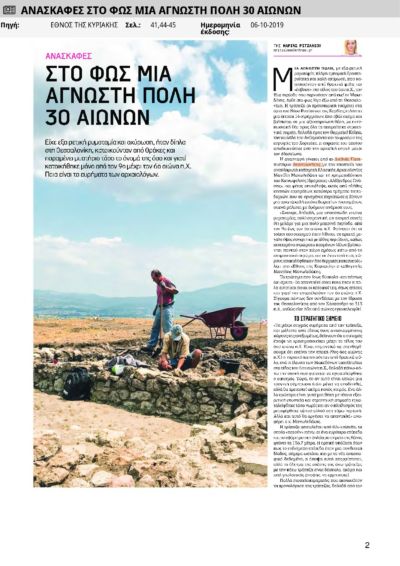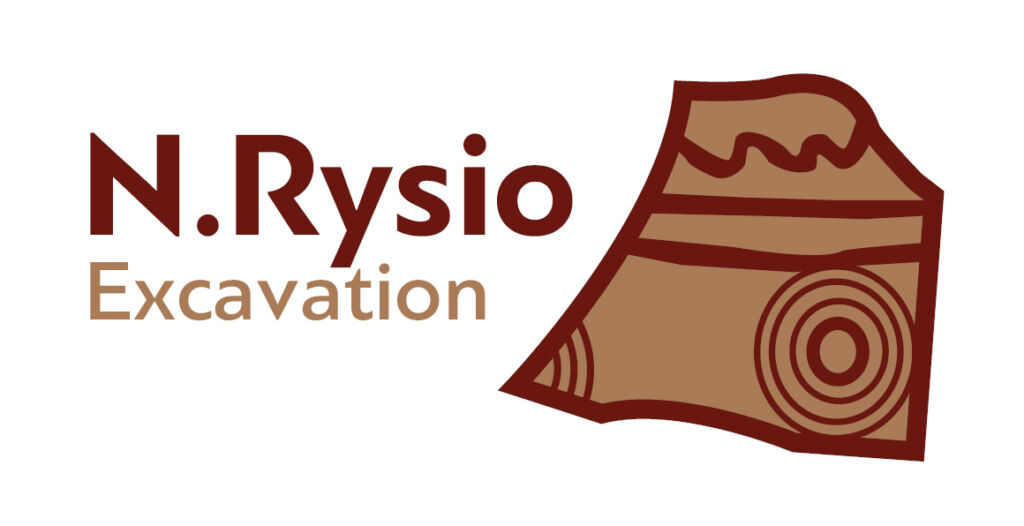
Archaeological Excavation of Neo Rysio-Kardia
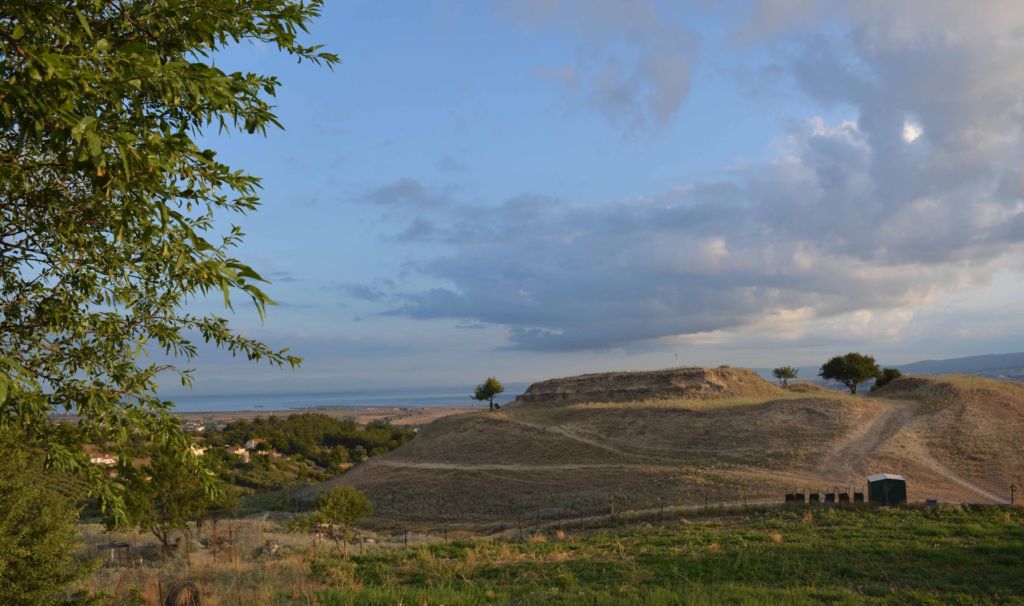
Archaeological Excavation of Neo Rysio-Kardia – History of Research
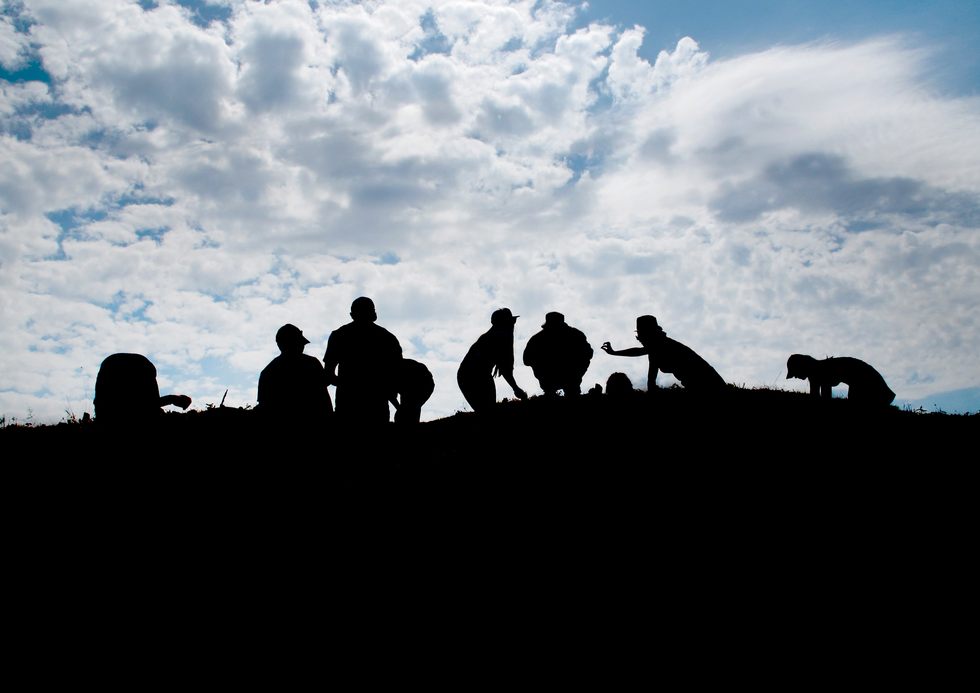
The site “Trapeza of Neo Rysio-Kardia”, where the International Hellenic University (IHU) conducts its own educational excavation, is located about 20km to the south of the city of Thessaloniki, outside the village of Neo Rysio. It covers an area of about 15km2, and is archaeologically investigated for the first time.
The site was first located by Léon Rey, a French archaeologist who participated in World War I with the forces of the British-French army that camped in Thessaloniki between 1916 and 1918. Afterwards only occasional and limited survey was conducted in parts of the site by members of the Greek Archaeological Service, which officially declared it an archaeological site in 1998. In 2016 the International Hellenic University received the permission by the Greek Ministry of Culture and Sports to systematically excavate the site. Archaeological research is conducted every June – early July for a whole month with the participation of postgraduate students of the IHU, while students from various institutions from Greece and abroad are also able to attend. Throughout the rest of the year, the archaeological material is recorded, photographed and conserved.
Indicative bibliography for the site:
- Rey, M., “Observations sur les premiers habitats de la Macédoine”, Bulletin de Correspondance Hellénique 41-43 (1917-1919): 137-138.
- French, H., Index of Prehistoric Sites in Central Macedonia, Thessaloniki 1967: 14, 60.
- Grammenos, D.V., Besios, Μ., and Kotsos, S., Από τους προϊστορικούς οικισμούς της Κεντρικής Μακεδονίας, Εταιρεία Μακεδονικών Σπουδών, Thessaloniki 1997 (Μακεδονική Βιβλιοθήκη αρ. 88): 22-33, n. 44 (Kardia).
- Soueref, K., Τοπογραφικά και Αρχαιολογικά Κεντρικής Μακεδονίας, Thessaloniki 2011: 117-124.
- Manoledakis, M., “Ανασκαφή του Διεθνούς Πανεπιστημίου της Ελλάδος στην Τράπεζα Νέου Ρυσίου–Καρδίας 2016-2017”, Αrchaiologiko Εrgo sti Makedonia kai Thraki 31 (2017, forthcoming).
- Manoledakis, M., “Ανασκαφή του Διεθνούς Πανεπιστημίου της Ελλάδος στην Τράπεζα Νέου Ρυσίου–Καρδίας 2018-2019”, Αrchaiologiko Εrgo sti Makedonia kai Thraki 33 (2021, forthcoming).
- Manoledakis, M., “Ανασκαφή του Διεθνούς Πανεπιστημίου της Ελλάδος στην Τράπεζα Νέου Ρυσίου–Καρδίας 2021”, Αrchaiologiko Εrgo sti Makedonia kai Thraki 34 (2022, forthcoming).
- Manoledakis, M., “The excavation of the ancient site at Neo Rysio, Thessaloniki”, Mare Ponticum 10 (2022): 99-109.
- Manoledakis, M., “Comparing the sources of historical knowledge. The settlement at Neo Rysio (Thessaloniki) and the Macedonian expansion to the east of the Axios”. In: L. Buzoianu, V. Lungu and D. Halmagi (eds.), To the sources of historical knowledge. Epigraphy, literary texts and archaeological documents. A tribute to Alexandru Avram, Pontica Supplementa, Constanta 2023: 65-88.
Archaeological Excavation of Neo Rysio-Kardia – The Settlement
The site “Trapeza of Neo Rysio-Kardia” is located on a mound with flattened surface (trapeza) in the northern end of ancient Kroussis and to the south of the Anthemous valley, close to the modern-day villages of Neo Rysio and Kardia, and near the airport of Thessaloniki. There, the remains of an ancient settlement that pre-existed the founding of Thessaloniki (316/5 BC) were discovered. This settlement was founded on a prominent location that oversees almost the whole valley of Anthemous, the Thermaic Gulf, as well as Mt. Kissos (modern Chortiatis).
During the first season (2016), research was concentrated on surveying the site and cleaning the surrounding wall of its upper terrace. During the next three seasons (2017-2019), the research team dug trial trenches that brought to light parts of buildings and streets. These finds offer valuable information regarding the plan of the settlement, which was mainly inhabited throughout the Early Iron Age and the Archaic periods (11th/10th-6th centuries BC).
The site “Trapeza of Neo Rysio-Kardia” belongs to a dense group of settlements that existed along the Thermaic Gulf before the conquest of this region by the Macedonians in the 6th century BC. In the dig site several rectangular and trapezoid buildings with several rooms came to light, built with walls whose lower parts were made of stone and the upper parts were made of clay mudbrick. Probably the roofs consisted of wooden planks and reeds. Inside the rooms pits were unearthed, as well as stone and clay constructions used for everyday activities. Between the buildings, the vertical and horizontal roads that were unearthed give an indicative image of the settlement’s urban planning even from the Early Iron Age.
Excavation over the past years brought to light highly interesting archaeological finds (pottery, stone and metal tools, spindle whorls and loom weights, bones and sea-shells). Each year, students also have the opportunity to practice at the cleaning, storing, inventorying and photographing of the excavated material. In the conservation laboratory of the International Hellenic University fragmented vases are mended, and archaeological material is conserved by an experienced team of conservators and by our students.
Archaeological Excavation of Neo Rysio-Kardia – Image Gallery
Archaeological Excavation of Neo Rysio-Kardia – Excavation in the Media
Interview of the director of the excavation, prof. M.Manoledakis, for the newspaper ΜΑΚΕΔΟΝΙΑ (26/03/24)
Live broadcast from the site on the daily informational show “Perimetros” of the Greek public channel ERT3, 22 June 2022. Source: ERT3.
Report on the main news programme of the Greek public channel ERT3, 22 June 2022. Source: ERT3.
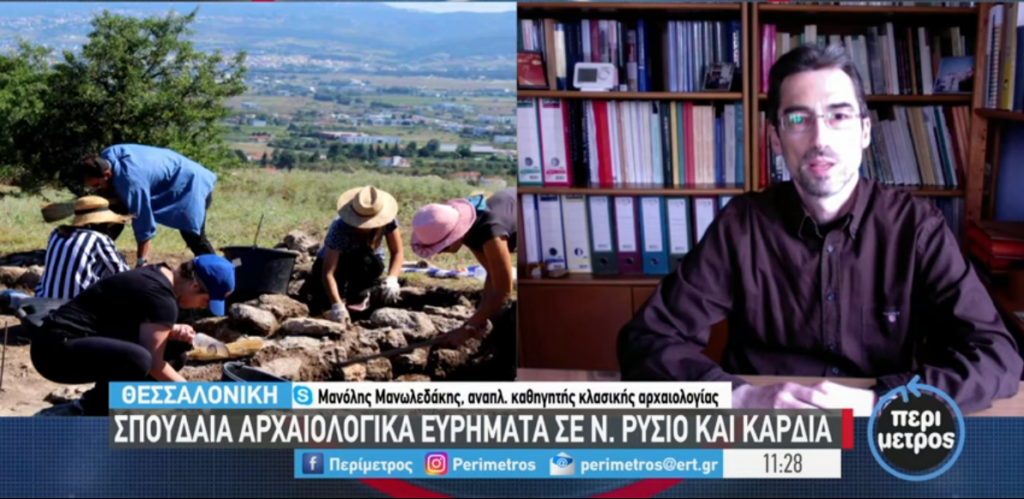
Days of Art 13, Summer – Autumn 2021
TV 100 prime time news of 23.4.2021: News report on the excavation’s results of 2018-2019, which were presented by the director of the excavation Assoc. Prof. Manolis Manoledakis in the 33th annual meeting on “The Archaeological Work in Macedonia and Thrace”
Interview of the director of the excavation, prof. Manoledakis, for the Greek public channel ET3 (17.10.2019)
Archaeological Excavation of Neo Rysio-Kardia – The Excavation Team
| ARCHAEOLOGISTS |
|---|
|
| ARCHITECT | TOPOGRAPHER | CONSERVATOR |
|---|---|---|
| Sofia Gatziou | Christos Mentesidis | Katerina Kalamartzi |
Every year the excavation team is strengthened with qualified workers and students of our MA programmes.
Archaeological Excavation of Neo Rysio-Kardia – Contact Information
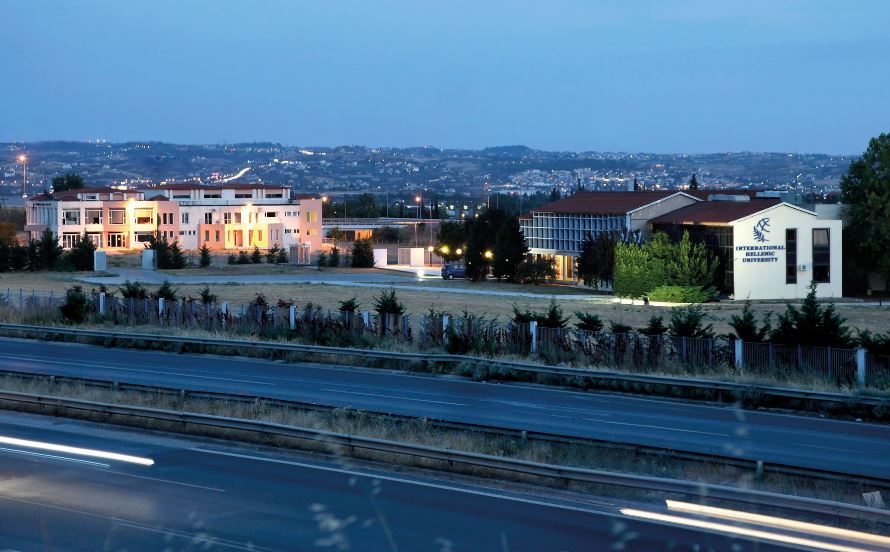
| Professor Manolis Manoledakis | Excavation Director | +30 2310 807537 | m.manoledakis@ihu.edu.gr |
| Dr. Eleni Mentesidou | Academic Associate | +30 2310 807508 | ementesidou@ihu.edu.gr |
| Dr. Trisevgeni Papadakou | Academic Associate | +30 2310 807508 | tpapadakou@ihu.edu.gr |
| Dr. Peli Plika | Academic Associate | +30 2310 807508 | p.plika@ihu.edu.gr |
| Anastasia Basakyrou | PhD Candidate | +30 2310 807508 | abasakyrou@ihu.edu.gr |
| Angeliki Chalkia | Programme Manager | +30 2310 807526 | a.chalkia@ihu.edu.gr |



